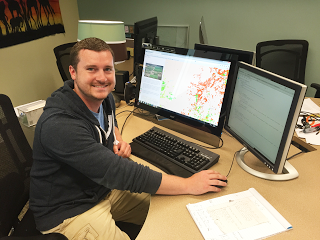
My name is Josh Hewitt and I am a web developer intern for the IISG Tipping Points and Indicators project at Purdue University. I graduated from Purdue in the fall of 2014 with a degree in computer graphics technology (CGT) with a focus on web development.
My job is to fix bugs on the website and to add features to give the user a better experience. Recently, we have talked about redesigning the layout of the website because the current design is a bit outdated.
The past few weeks I have been talking with my team to figure out a layout that would enhance the users’ experience. I create mock-ups of layouts in Photoshop and then code it in Dreamweaver. We’re really excited to get this redesign done and show it to our users. We think they’ll be blown away with the improvement.
My internship has been great so far and I have learned A LOT. I would definitely recommend it to anyone looking to get some experience in web development. Not only is the web experience great but my team is really friendly and helpful. They’re always willing to give me advice when I’m stuck.
Great experience. Great people. Great internship.
-Josh Hewitt


